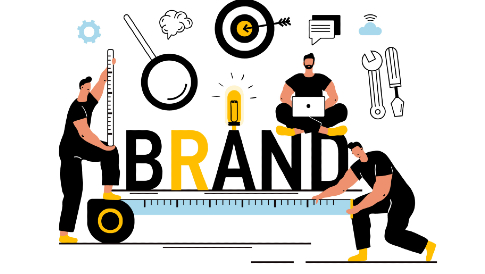Office Furniture Solutions: The Future of Ergonomics, Design, and Technology Integration
As we flow further into the virtual age, the office environment is evolving, and so are the fixtures that shape it. Office fixtures are not just about aesthetics or functionality; it’s miles about developing an environment that promotes fitness, maximizes productiveness, and adapts to the ever-converting desires of the present-day team of workers. The office furniture solutions lie at the intersection of ergonomics, innovative design, and seamless generation integration. Let’s discover how those 3 factors are redefining office furniture solutions in the workplaces of these days and the day after today.
1. Ergonomics: A Central Component for Health and Productivity

Ergonomics has always been an important interest in place of office furniture, but its significance has never been greater than in contemporary work culture. With a developing recognition of the terrible health results of extended sitting, poorly designed workstations, and static postures, the decision for ergonomic answers is on the upward push. Adding aesthetic touches like painted window boxes can complement these ergonomic improvements, bringing a touch of greenery and color to the workspace, which can uplift mood and create a more inviting and inspiring environment.
Height-Adjustable Desks for Dynamic Working
Height-adjustable desks, or sit-down-stand desks, are becoming a staple of ergonomic office furniture solutions. These desks permit customers to alternate between sitting and standing throughout the day, decreasing the danger of musculoskeletal problems and improving power degrees. Modern versions include programmable peak presets, making the transition convenient.
Height-adjustable desks are evolving to encompass personalised reminders and digital monitoring structures that encourage customers to change positions at pinnacle-rated intervals. This records-driven approach permits employees to find the proper balance between comfort and productivity, contributing to more wholesome work.
Active Seating for Increased Movement
Future office seating will focus on encouraging motion instead of static posture. Active seating alternatives, such as stability stools, kneeling chairs, or saddle chairs, are designed to engage middle muscles and inspire better posture. These dynamic seating office furniture solutions assist people in living engaged lives, lessen tension, and enhance circulation.
Additionally, ergonomic chairs incorporate features like flexible backrests, adjustable lumbar guides, and tilt mechanisms that adapt to a character’s posture in real-time. This personalization guarantees each consumer gets a chair tailored to their specific wishes, reducing soreness and increasing productivity.
Ergonomic Accessories for Customizable Comfort
The destiny of ergonomic furnishings consists of add-ons that help personalize workstations to suit the man or woman. From display arms that allow presentations to be adjusted to the ideal top to ergonomic footrests that provide better leg help, those additions have ended up more vital in designing an entire ergonomic workspace. This customization isn’t just about comfort; it’s about empowering employees to take pride in their well-being, fostering a fitness subculture in the place of business.
2. Innovative Office Furniture Solutions: Balancing Aesthetics, Functionality, and Flexibility

Office fixtures layout isn’t constrained to genuinely presenting characteristics; it also improves the overall painting experience. Aesthetic attraction, flexibility, and creating personalized environments are crucial elements of place-of-job office furniture solutions.
Minimalism Meets Functionality
The minimalist format continues to dominate office furnishings, with easy strains, independent colours, and uncluttered aesthetics developing calming and powerful painting environments. However, the future of minimalist furnishings isn’t just about simplicity but about seamlessly incorporating features.
Desks with covered garage cubicles, hidden cable management systems, and modular elements provide important capability without including visible clutter. The intention is to acquire a minimalist aesthetic that doesn’t sacrifice realistic abilities, permitting workers to maintain a simple workspace while preserving the entirety they want within reach.
Modular and Multi-Purpose Furniture for Flexibility
Modern offices are dynamic environments where groups trade, workflows shift, and neighbourhood needs range. To meet those needs, fixtures ought to be flexible and adaptable. Modular workstations are at the forefront of workplace furniture layout, allowing desks, tables, and walls to be effortlessly reconfigured.
Desks that can be redecorated from personal workstations to collaborative zones, cellular garage gadgets that double as seating, and tables that can be folded and stowed away while not in use are all examples of multi-motive office furniture solutions that are gaining recognition. This adaptability guarantees that workplace spaces may be optimized for unique uses, fostering a creative and agile experience that’s critical in the modern workplace.
Biophilic Design for Well-Being
Biophilic format, including natural elements in the workplace, is becoming increasingly popular. Office furniture solutions that integrate wood, natural fibres, and natural shapes help create a connection to nature, which has been shown to reduce pressure and boost creativity. Desks crafted from reclaimed wood, plant stands that still function as room dividers, and furniture with rounded, organic paperwork contribute to an office atmosphere that feels more relaxed and alluring.
This awareness of well-being through format pushes workplace furniture to prioritize comfort, aesthetics, and harmony, permitting employees to feel more at home and connected to their environment.
3. Technology Integration: Smart Furniture for the Digital Age

With the virtual transformation of labor, workplace fixtures are likewise evolving to integrate technology more fully and create workspaces that are organized for the future. The emphasis is on creating seamless, connected environments in which technology enhances productivity without introducing complexity.
Smart Desks for Seamless Connectivity
Smart desks are a leading innovation inside the destiny of place of job furniture. These desks encompass features such as wireless charging pads and USB ports and include cable control, retaining gadgets associated and workstations litter-free. Some smart desks embody virtual interfaces that can manage desk pinnacle, screen air tremendous, or provide productive analytics.
This simultaneous integration of technology into the table transforms it into more than just a surface to paint on—it will become an intelligent detail of the workplace surroundings that enhances productivity and luxury.
Integrated Power Solutions for a Cord-Free Environment
As our reliance on electronic devices grows, dealing with cables and retaining power access has become a major challenge. Office furnishings are now being designed with incorporated power solutions, such as hidden power strips, Wi-Fi charging stations, or even table surfaces that allow manual conductive charging for multiple devices.
These improvements ensure that workspaces are tidy and free from the tangle of cables that often dominate traditional office environments. This improves aesthetics and contributes to a more targeted and green art experience.
IoT-Enabled Workspaces for Personalized Experiences
The Internet of Things (IoT) is being integrated into administrative center furnishings to create customized and associated reports. IoT-enabled furnishings can communicate with different office elements, such as lighting, HVAC systems, or even scheduling software. For example, an IoT-enabled chair may additionally want to adjust automatically to the person’s desired settings when they sit down, or a desk may need to track how long someone has been running and suggest breaks.
These clever, related features make a contribution to a more snug and inexperienced workday through watching for and responding to the needs of people. The integration of IoT into place of business fixtures isn’t always pretty a whole lot comfort—it’s about developing environments that adapt to people in preference to the other manner around.
Acoustic Solutions for Open Offices
As open-plan offices continue to dominate the place of work format, handling noise degrees has emerged as crucial for improving productivity. Office furniture solutions with integrated acoustic residences is gaining traction as a solution. Acoustic pods, sound-absorbing panels, or even desks with covered sound boundaries support the creation of quieter, extra-centred artwork areas.
These improvements are important for balancing the open workplace’s benefits—which include collaboration and space efficiency—with the desire for attention and privacy. By integrating acoustic answers into the fixtures themselves, groups can create more balanced painting environments that cater to different artwork styles.
Conclusion
The future of place of business fixtures is about more than virtually helping paintings—it’s about enhancing the overall revel in of the place of work. By specialising in ergonomics, current layout, and technology integration, workplace fixtures are evolving to fulfil contemporary employees’ complicated wishes and create environments that are probably conducive to both productiveness and nicely-being. Transform your workspace with incredible, low-priced answers from fastofficefurniture.com.au, in which short delivery and splendid providers meet your office desires!
Ergonomics guarantees that workspaces are comfortable and supportive, promoting health and lowering the dangers associated with extended sitting. The innovative format provides a cultured attraction that makes business a more outstanding place to be while providing the energy to adapt to considered one-of-a-kind duties and organization systems. Technology integration connects the fixtures to the broader digital ecosystem, growing intelligent, related environments that enhance productivity and streamline the paintings.
As we redefine workplace fixtures, the goal is to create areas that are adaptable, snug, and prepared for the future—areas where humans are stimulated to do their pleasant work and where furnishings become an accomplice in productivity instead of just a tool. By embracing those trends, groups can create work environments that aren’t only sensible but also forward-thinking, ensuring they’re prepared to face the demanding situations and opportunities of the digital age.




Leave a Reply